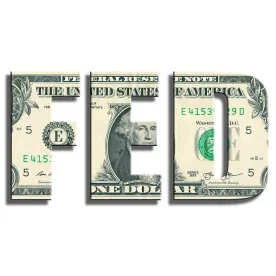In March 2001, the U.S. Securities and Exchange Commission (“SEC”) published Notice 01-18, pursuant to which the SEC approved rules requiring “Fixed Income Transaction Reporting And Dissemination” under SEC Rule 6200 Series, so that information about the trading of corporate bonds and certain structured products would be publicly available. The reporting system was named “Trade Reporting and Compliance Engine” (“TRACE”). TRACE determines which bond transactions must be reported and when that information must be reported. The TRACE technology platform is administered in conjunction with the Financial Institution Regulatory Authority (“FINRA”), as the successor to the regulatory authority part of the National Association of Securities Dealers (“NASD”). Registered broker-dealers (i.e., registered with the SEC), who are FINRA members (and almost all are), are required to report on TRACE trades in fixed income securities, including prices and trade volume. This information is accessible by the public, including other broker-dealers.
The Fed to Collect the TRACEs
Beginning in July 2017, registered broker-dealers have been required to report transactions in U.S. Treasury securities (i.e., Notes, Bonds, etc., as well as most Agencies) to TRACE. The enhanced transparency in the trading activity involving government securities has recently been the subject of several regulatory initiatives, including the September 28, 2020, proposal of the SEC to amend its Regulation ATS (“Alternative Trading Systems”) to remove the exemption from the application of Regulation ATS to trading in government securities. See a thorough discussion of the SEC proposal and the reasons for it in my December 1, 2020, blog post, “Treasury Transparency: Enhanced Regulations for Trading in Government Securities.” In that December 1 blog post, I repeatedly cite the comments of Commissioner Elad L. Roisman (Acting Chair of the SEC from December 23, 2020, until January 21, 2021) concerning both the importance of increased transparency and possible “safety and soundness” structural requirements, points made in his September 28, 2020, presentation at a Conference on the U.S. Treasury Market sponsored by the SEC, the Commodity Futures Trading Commission, the U.S. Treasury, and the Board of Governors of the Federal Reserve System (the “Fed”).
On Thursday, January 21, 2021, the Fed issued a “Proposed Agency Information Collection Activities; Comment Request,” 86 FR 6329, which, if implemented, would have the Fed collect data on daily trading activities in U.S. Treasuries from TRACE. The Fed proposal would also require the collection from certain banking institutions of data on daily transactions in debt and mortgage-backed securities issued by agencies of the U.S. Government. In a January 22, 2021, “Statement on Federal Reserve Board’s Proposed Collection of U.S. Treasury Transaction Data,” Commissioner Roisman commends the Fed for the Proposal. He notes again, as he did in his September 28, 2020, presentation, “…given the importance of the Treasury Market, it is vital that TRACE include a complete set of Treasury transaction information.” The Commissioner went on to add:
I look forward to continued collaborative efforts among regulators to pursue initiatives to enhance the Treasury market’s transparency, integrity, and resiliency.
Tracking Treasury Trading
Given the sheer size of the market for Treasury securities (some $835 billion average daily trading volume between July and December 2019) and the recurring instances of the market “freezing up” (after 9/11, during the worst days of the Great Recession in 2008, and after COVID-19 struck), the importance of this kind of data collection should be obvious, particularly when many believe that the U.S. economy is recovering primarily because of the extraordinary interventions in the market by the Fed. How much better that the Fed’s actions be taken with the benefit of knowledge, and not (as in the words of St. Paul in the First Epistle to the Church at Corinth, Chapter 13, Verse 12) “through a glass darkly.”



 />i
/>i

